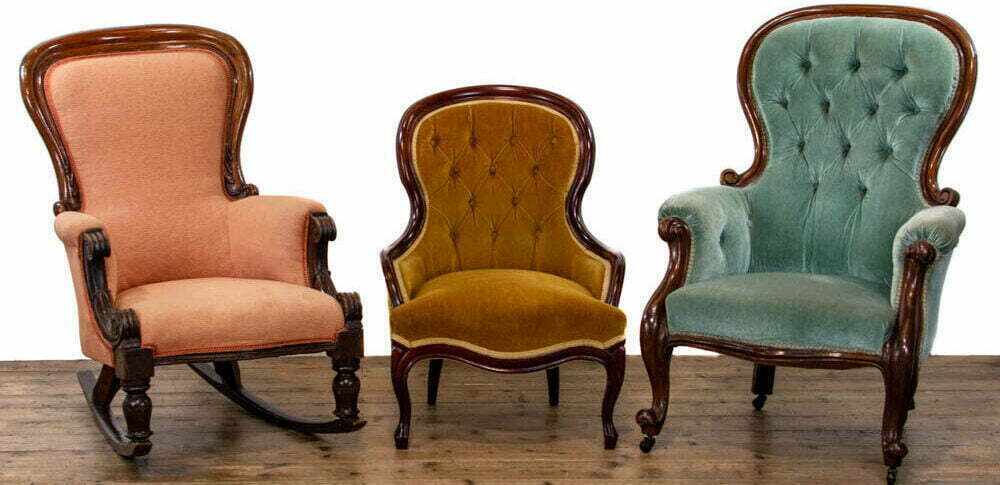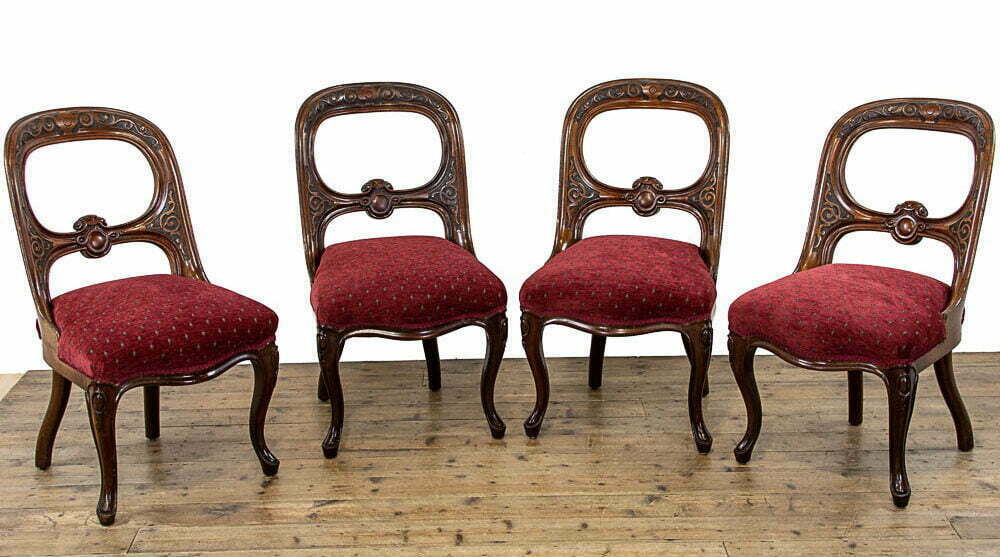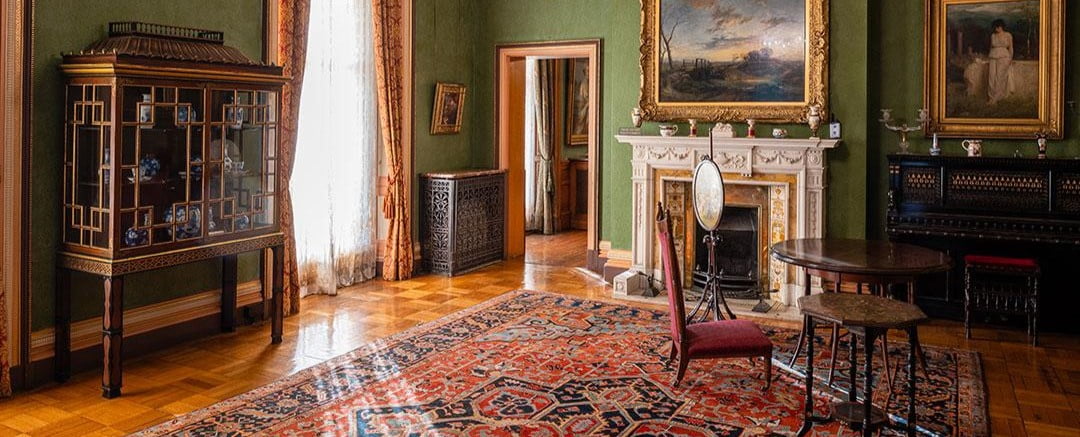In The Spotlight: Victorian Furniture
The Victorian era in England and Wales was a time of significant growth and change, with a thriving middle class and a corresponding increase in demand for luxury goods and home furnishings. Victorian antique furniture with its ornate and elaborate designs, remains an enduring symbol of the era.
Early Victorian Furniture
During the early years of the Victorian era, there was a revival of interest in historical styles. In furniture design, this was characterized by dark woods, heavy carving, and a sense of grandeur. One of the most popular historical styles of Victorian antique furniture during this period was Rococo Revival, popularized by furniture makers like John Henry Belter. The use of Rococo style in furniture reflected the Victorian era’s fascination with luxury and excess. This style was popular among the wealthy, who sought to decorate their homes with opulent and extravagant pieces. Rococo revival furniture was often made from high-quality materials such as mahogany, rosewood, and walnut which was often adorned with gilded decoration, marble tops, and intricate carvings.
Furniture makers also drew inspiration from medieval architecture and design, resulting in ornate pieces with elaborate carvings and details. Furniture from this period often featured curves, scrolls, and floral or natural motifs. The introduction of new materials and techniques also played a significant role in the development of early Victorian furniture. The transition to steam-powered machinery allowed for faster and more efficient production, and this led to the widespread availability of furniture for the middle class. As a result, early Victorian furniture often incorporated cheaper materials, such as stained pine or mahogany veneers to make the pieces more affordable.

One of the most popular furniture styles of the early Victorian era was the balloon-back chair. This style of chair featured a distinctive rounded backrest with a carved or pierced decoration. Balloon-back chairs were often made from a combination of solid wood and veneers and were upholstered with floral or striped fabrics. Other popular furniture styles of the early Victorian era included the chiffonier, a type of tall, narrow cabinet with drawers and shelves for storing household items, and the sideboard, a long, low cabinet used for serving food and drink. These pieces were often highly ornate, with intricate carvings and decorative details.
Mid-Victorian Furniture
As the Victorian era progressed, there was a shift towards simpler, more practical designs. This period, known as the “Middle Victorian” period, saw the rise of mass production techniques that made Victorian antique furniture more affordable and accessible to the middle class. The Middle Victorian period also saw the development of the Arts and Crafts movement, which emphasized the beauty of natural materials and traditional craftsmanship. The Arts and Crafts movement emerged in the 1860s in response to the Industrial Revolution and the increasing mechanization of the manufacturing process. Proponents of the movement believed that mass-produced goods lacked soul and authenticity and sought to promote the value of handmade goods created by skilled craftsmen.
The furniture designs of the Arts and Crafts movement were characterized by simplicity, functionality, and a focus on the natural beauty of the materials. Charles Rennie Mackintosh, a Scottish architect, and designer, was one of the most influential figures of the Arts and Crafts movement. He created Victorian antique furniture that was both elegant and functional, using materials like oak, teak, and ebony to create simple, geometric designs that were both modern and timeless.
Late Victorian Furniture
The final years of the Victorian era, known as the “Late Victorian” or “Eastlake” period, were marked by a return to more ornate and decorative styles of Victorian antique furniture. Furniture from this period was characterized by intricate carvings, rich fabrics, and exotic woods like mahogany and ebony. Charles Eastlake, an influential furniture designer of the Late Victorian period, advocated a style with old English and Gothic elements that were more functional and practical.

In Wales, the development of Victorian antique furniture was influenced by the country’s strong tradition of craftsmanship and woodworking. Welsh furniture makers were known for their use of local woods like oak and elm, as well as their distinctive style of carving.
Overall, the development of Victorian antique furniture in England and Wales was characterized by a desire for luxury and elegance, as well as an increasing focus on functionality and affordability. From the grandeur of the early years to the simplicity of the middle years and the ornate designs of the later years, Victorian antique furniture reflects the changing tastes and styles of the era. Today, Victorian antique furniture remains popular among collectors and enthusiasts, a testament to its enduring appeal and timeless beauty.
Here at Penderyn Antiques we offer a wide range of furniture, to shop our Victorian Antiques click here.

